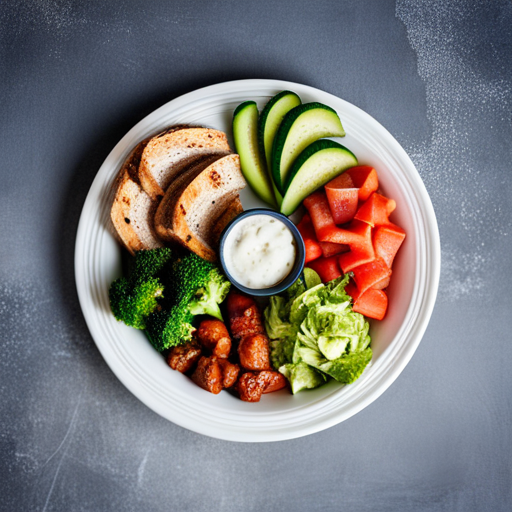"Cherishing Little Steps - A Haven for Baby and Family Journeys"
Lose Baby Weight Fast
Are you struggling to shed those extra pounds after having a baby? Look no further! Losing baby weight fast is within your reach.
Meet Sarah, a busy mother of two who successfully dropped 20 pounds in just three months. With a few simple strategies and a commitment to self-care, you too can achieve your weight loss goals.
This guide will provide you with practical tips and advice tailored specifically to your needs. From setting realistic goals to incorporating healthy eating habits and regular exercise, we will guide you every step of the way.
Get ready to reclaim your pre-baby body and feel confident and strong in your own skin. Let’s embark on this journey together!
Key Takeaways
- Set achievable weight loss targets and approach weight loss in a healthy and sustainable way
- Prioritize healthy eating habits by planning meals in advance and including a variety of nutritious foods
- Incorporate regular exercise into your routine, starting with low-impact activities and gradually increasing intensity
- Stay hydrated by drinking at least 8 glasses of water per day and paying attention to your body’s thirst cues
Set Realistic Weight Loss Goals

Set achievable weight loss targets.
When it comes to losing baby weight, it’s important to set realistic expectations for yourself. Many new moms have the desire to shed those extra pounds quickly, but it’s essential to approach weight loss in a healthy and sustainable way. Crash diets or extreme exercise regimens may promise rapid results, but they can be detrimental to your overall well-being. Instead, focus on adopting healthy habits and making gradual changes to your lifestyle.
There are various weight loss methods that can help you reach your goals. One effective approach is to combine a balanced diet with regular physical activity. Aim to consume a variety of nutrient-rich foods, such as fruits, vegetables, lean proteins, and whole grains. Incorporating regular exercise into your routine is also crucial. Start with low-impact activities like walking or swimming, and gradually increase the intensity as your fitness level improves.
Prioritize Healthy Eating Habits

To prioritize healthy eating habits and support your weight loss goals, focus on incorporating nutrient-rich foods into your diet. Healthy meal planning and mindful eating are effective strategies that can help you achieve this. Here are three key steps you can take:
-
Plan your meals: By planning your meals in advance, you can ensure that you have nutritious options readily available. Make a grocery list and include a variety of fruits, vegetables, lean proteins, whole grains, and healthy fats. This will help you avoid impulsive food choices and make healthier decisions throughout the week.
-
Practice mindful eating: Mindful eating involves paying attention to your body’s hunger and fullness cues, as well as the taste and texture of the food you consume. Slow down and savor each bite, noticing how it nourishes your body. This can help prevent overeating and promote a healthier relationship with food.
-
Include a balance of nutrients: Aim for a well-rounded diet that includes all essential nutrients. Incorporate lean proteins like chicken, fish, and tofu, along with plenty of fruits and vegetables. Whole grains, such as quinoa and brown rice, provide fiber and important vitamins. Don’t forget to include healthy fats from sources like avocados, nuts, and olive oil.
Incorporate Regular Exercise Into Your Routine

Start by including regular exercise in your daily routine to maximize your weight loss efforts and regain your pre-baby fitness. After giving birth, many women experience a weight loss plateau, where the scale seems to be stuck despite their efforts. Incorporating exercise into your routine can help break through this plateau and continue your weight loss journey.
The benefits of exercise during the postpartum period extend beyond just losing weight. Exercise can help improve your mood, reduce stress, boost your energy levels, and strengthen your muscles. It can also help you sleep better, which is crucial when you have a newborn to take care of.
When it comes to choosing the right exercises, start with low-impact activities such as walking, swimming, or cycling. These exercises are gentle on your joints and can be easily incorporated into your daily routine. As you regain your strength and fitness, you can gradually increase the intensity and duration of your workouts.
Remember to listen to your body and start slowly. It’s important to give yourself time to heal and adjust to your new role as a mother. Be consistent with your exercise routine, and don’t be too hard on yourself if you miss a day or two. Every little bit counts, and even short bursts of exercise can make a difference.
Incorporating regular exercise into your routine won’t only help you lose baby weight but also improve your overall health and well-being. So, lace up your sneakers, grab your baby stroller, and start moving towards a healthier, fitter you.
Stay Hydrated for Optimal Weight Loss

Staying hydrated is essential for optimal weight loss after having a baby. Hydration benefits your body in numerous ways, including boosting your metabolism, suppressing your appetite, and increasing your energy levels. To ensure you stay properly hydrated, follow these water intake guidelines:
-
Drink at least 8 glasses of water per day: Water is the best choice to stay hydrated. Aim to drink at least 8 glasses (64 ounces) of water daily to keep your body functioning optimally and support weight loss.
-
Hydrate before, during, and after exercise: When you exercise, your body loses water through sweat. To replenish lost fluids and maintain hydration, drink water before, during, and after your workouts. This will help maximize the benefits of your exercise routine and aid in weight loss.
-
Listen to your body’s thirst cues: Pay attention to your body’s signals of thirst and drink water whenever you feel thirsty. It’s important not to ignore your body’s needs, as dehydration can hinder weight loss progress.
Get Adequate Sleep to Support Weight Loss

Make sure you’re getting enough sleep to support your weight loss goals after having a baby. Adequate sleep plays a vital role in your overall health, including weight management. Research suggests that lack of sleep can disrupt your body’s hormonal balance, leading to increased hunger and cravings for unhealthy foods. To improve sleep quality, establish a bedtime routine that promotes relaxation and prepares your body for restful sleep.
Creating a consistent sleep schedule can help regulate your body’s internal clock and promote better sleep. Aim for 7-9 hours of uninterrupted sleep each night to support weight loss efforts. Avoid consuming caffeine or engaging in stimulating activities close to bedtime, as these can interfere with your ability to fall asleep.
Incorporate relaxation techniques into your bedtime routine, such as reading a book, taking a warm bath, or practicing deep breathing exercises. These activities can help calm your mind and prepare your body for sleep.
Creating a comfortable sleep environment is also crucial for quality sleep. Ensure your bedroom is cool, dark, and quiet. Invest in a comfortable mattress and pillows that support your body’s needs.
Utilize Portion Control to Manage Caloric Intake

To manage your caloric intake and support your weight loss goals after having a baby, incorporate portion control into your daily eating habits. Portion control benefits your body by helping you consume the right amount of food without feeling deprived.
Here are three mindful eating techniques that can assist you in implementing portion control effectively:
-
Use smaller plates and bowls: By using smaller dinnerware, you naturally reduce the amount of food you serve yourself. This visual trick can help you feel satisfied with smaller portions.
-
Measure your food: Invest in measuring cups or a food scale to accurately portion your meals and snacks. This practice ensures that you aren’t unknowingly consuming more calories than you need.
-
Slow down and savor your food: Eating mindfully allows you to fully enjoy each bite and recognize when you’re comfortably full. Take your time, chew your food thoroughly, and listen to your body’s hunger and fullness cues.
By incorporating these portion control techniques into your daily routine, you can manage your caloric intake and support your weight loss journey after having a baby.
Try High-Intensity Interval Training (HIIT) Workouts

To maximize your weight loss efforts after having a baby, incorporate high-intensity interval training (HIIT) workouts into your fitness routine. HIIT is a form of exercise that alternates between short bursts of intense activity and brief recovery periods. This type of workout has been shown to be highly effective for burning calories and shedding excess pounds.
One of the key benefits of HIIT is its ability to increase your metabolic rate, even after you’ve finished exercising. This means that your body continues to burn calories at a higher rate, long after your workout is over. In fact, research has shown that HIIT can increase your metabolism for up to 24 hours post-workout. This is in contrast to steady-state cardio exercises, such as jogging or cycling, which only burn calories during the actual exercise session.
Another advantage of HIIT is its time efficiency. With HIIT, you can achieve the same or even greater benefits in a shorter amount of time compared to traditional cardio workouts. HIIT workouts typically last between 10-30 minutes, making them easier to fit into your busy schedule as a new mom.
In addition to its weight loss benefits, research has also found that HIIT can improve cardiovascular health, increase muscle mass, and enhance insulin sensitivity. These benefits are particularly important for postpartum women who may be at a higher risk for developing cardiovascular disease and insulin resistance.
Incorporate Strength Training for Muscle Building

Boost your weight loss efforts after having a baby by incorporating strength training for muscle building. Strength training not only helps you build lean muscle mass, but it also increases your metabolism, allowing you to burn more calories throughout the day.
Here are three effective muscle building exercises that can help you get started:
-
Squats: Squats target multiple muscle groups, including your glutes, quadriceps, and hamstrings. Not only do squats help you build strength in your lower body, but they also engage your core muscles for stability.
-
Deadlifts: Deadlifts are a compound exercise that works your entire body, particularly your back, glutes, and hamstrings. By lifting heavy weights off the ground, you not only build strength and muscle, but you also improve your overall posture and stability.
-
Push-ups: Push-ups are a classic exercise that targets your chest, shoulders, triceps, and core. They can be modified to suit different fitness levels, making them a versatile exercise for building upper body strength.
Incorporating these exercises into your fitness routine can help you build muscle, increase your metabolism, and ultimately boost your weight loss efforts. Remember to start with lighter weights and gradually increase the intensity as you become stronger. Be consistent with your strength training workouts and you’ll see results in no time.
Stay Consistent With Your Weight Loss Efforts

To stay consistent with your weight loss efforts after having a baby, commit to a regular exercise and healthy eating routine. Consistency challenges can arise when juggling the demands of motherhood, but with the right motivation tips, you can overcome them.
First, set realistic goals. Understand that losing baby weight takes time and patience. Aim for gradual weight loss of 1-2 pounds per week, as this is a healthy and sustainable rate.
Next, find a workout routine that fits into your daily schedule. Choose activities that you enjoy and can easily incorporate into your day. This could include brisk walks with your baby in a stroller, mommy and baby yoga classes, or even workout videos you can do at home during naptime.
Another motivation tip is to track your progress. Keep a journal or use a fitness app to record your workouts and meals. This won’t only help you stay accountable but also allow you to see your progress over time, which can be incredibly motivating.
Lastly, find support. Joining a postpartum fitness group or finding a workout buddy can provide the encouragement and accountability you need to stay consistent.
Seek Support and Accountability for Long-Term Success

Find a support system that will hold you accountable for long-term success in losing baby weight. Having support and accountability can make a significant difference in achieving your weight loss goals.
Here are three ways to seek support and accountability for long-term success:
-
Join a support group: Consider joining a support group specifically designed for new mothers who are trying to lose baby weight. These groups provide a safe space to share experiences, tips, and struggles with other women who are going through the same journey. Being part of a support group can provide emotional support, motivation, and encouragement to stay on track.
-
Find an accountability partner: Look for someone who’s also focused on losing weight and becoming healthier. Choose someone who’s reliable, committed, and shares similar goals. An accountability partner can provide the necessary push to stay consistent and help you stay motivated on days when you may feel discouraged. You can check in with each other regularly, share progress, and offer support when needed.
-
Utilize online communities and resources: In today’s digital age, there are numerous online communities and resources available that can provide support and accountability. Join online forums or social media groups dedicated to postpartum weight loss. These communities can offer valuable advice, tips, and encouragement. Additionally, there are various mobile apps that can help you track your progress and connect with others on a similar journey.
Frequently Asked Questions
How Much Weight Can I Expect to Lose in a Week by Following These Tips?
You can expect to lose varying amounts of weight in a week by following these tips. Remember, the key is to focus on effective exercise routines and make gradual, sustainable changes for long-term success.
Can I Still Eat My Favorite Foods While Trying to Lose Baby Weight?
Yes, you can still enjoy your favorite foods while trying to lose baby weight. Look for healthier alternatives and practice portion control. Combine this with effective exercise routines to achieve your weight loss goals.
Is It Safe to Start Exercising Immediately After Giving Birth?
After giving birth, it’s important to prioritize your recovery before jumping into exercise. Consider factors like breastfeeding and postpartum healing. Remember, taking care of your mental health is just as vital as physical fitness. Find time for exercise that works for you as a new mom.
How Many Hours of Sleep Should I Aim for Each Night to Support Weight Loss?
To support weight loss, aim for 7-9 hours of sleep each night. Adequate sleep helps regulate hunger hormones, boosts metabolism, and improves willpower to make healthy choices. Prioritize rest for optimal results.
What Are Some Healthy Snack Options That Can Help With Weight Loss?
Looking for healthy snack options? Try tasty treats like trail mix or Greek yogurt with berries. Stay motivated on your weight loss journey by setting small goals and rewarding yourself.
Conclusion
Losing baby weight can feel like a daunting task, but with realistic goals, healthy eating habits, regular exercise, and support, it’s possible to shed those extra pounds. Remember, consistency is key, and staying hydrated and getting enough sleep are crucial for optimal weight loss.
Incorporating HIIT workouts and strength training can also help you reach your goals faster. So, lace up your sneakers, grab a glass of water, and embrace the journey towards a fitter, healthier you.
As the saying goes, Rome wasn’t built in a day, but with determination and perseverance, you can sculpt your own masterpiece.


